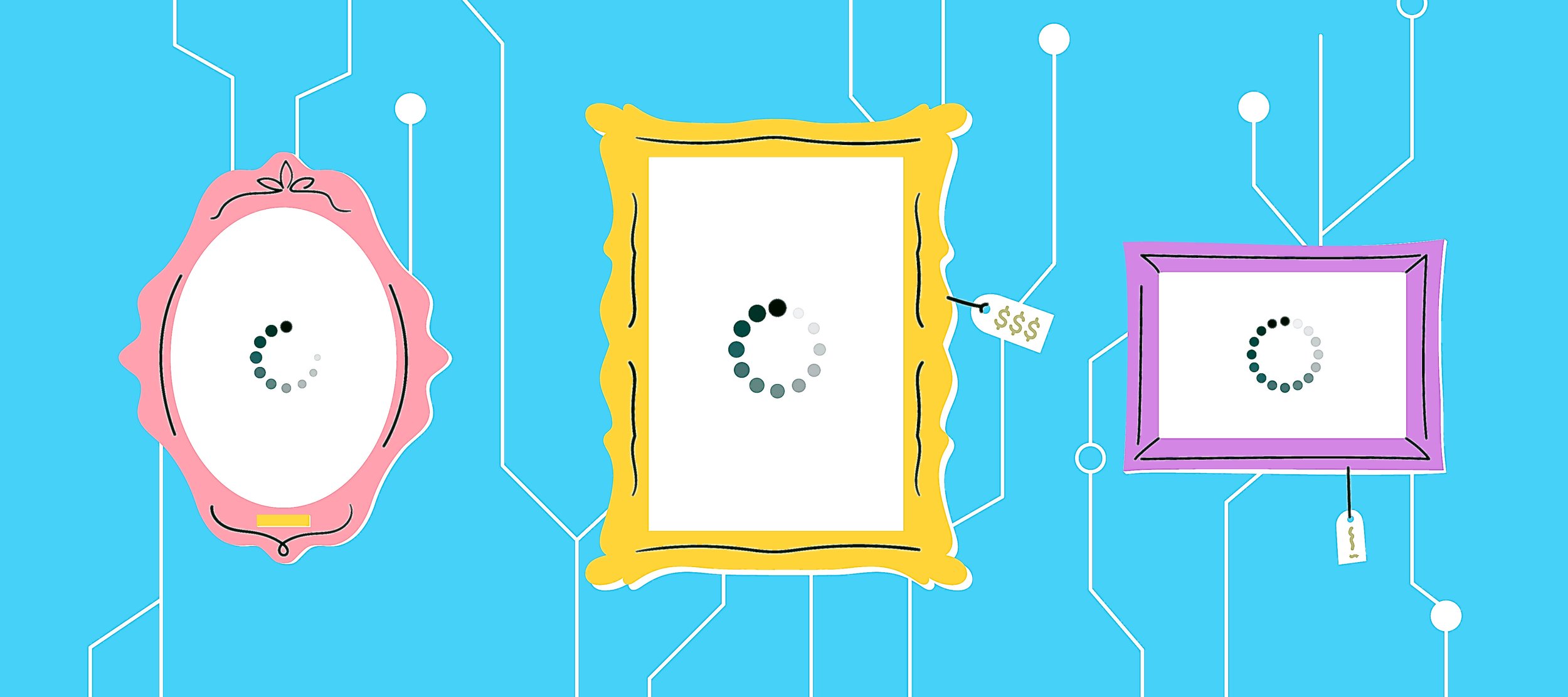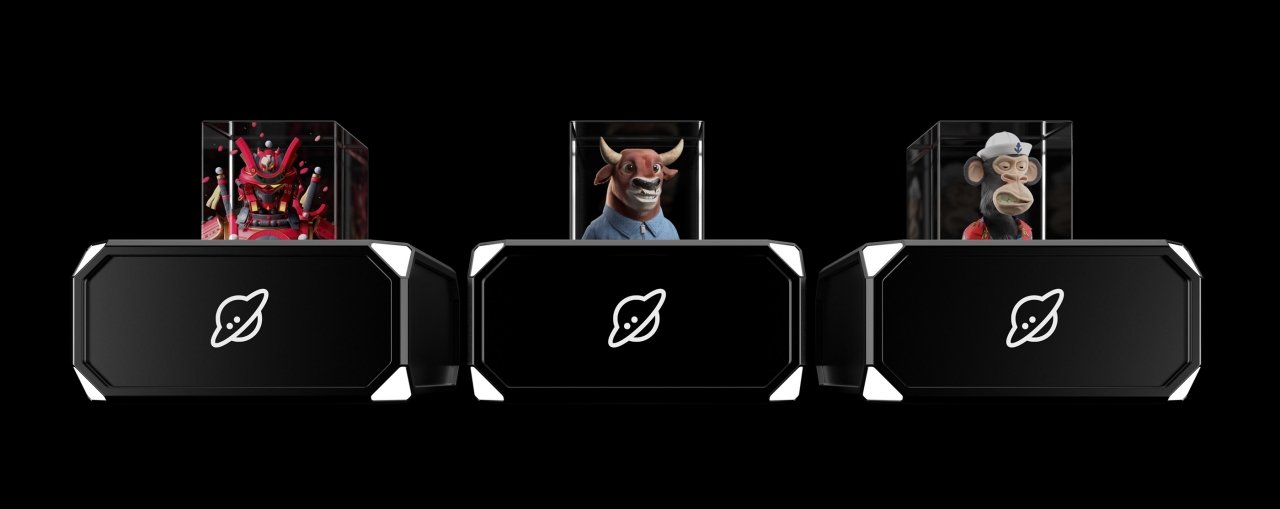Collect and Disrupt: NFTs, Art and War
Like any new technology gaining influence, NFTs inspire heated debate about their utility, value and potential for harm. Nascent technology always does – take IBM CEO Thomas J. Watson’s prediction in 1943 that “there is a world market for about five computers.”
Though a small percentage of the global population has been playing in the cryptosphere for years, most of us are unclear on what it portents. Critics mock NFTs as lines of code valueless as air, while proponents herald them as the future of value in an increasingly digitized world. The debate proves one thing for sure - NFTs are disrupting everything from currencies to crowdsourcing to artistic practices to the nature of collecting itself.
NFT’s values are subject to market whims and social obsessions.
As a refresher, an NFT, which stands for non fungible token, is like a deed of ownership to a unique digital asset. That so-called deed is a public digital record on the blockchain. Cryptocurrency such as Bitcoin are fungible assets - interchangeable and divisible like a U.S. dollar. But each non fungible token is created individually, the way an oil painting or a Victorian watch fob or a scallop shell is unique and therefore of value subjective to demand.
Almost anything can be an NFT. As innovation and adoption grow, the potential for NFTs will continue to grow as well, into spheres we cannot now imagine. Thomas J Watson surely would not have believed that 79 years from his prediction millions of people would be walking around with pocket sized computers in their hands. For now the most popular NFTs are collectibles: artwork, sports paraphernalia, music, trading cards, memes, games and even symbols of sovereignty during wartime.
The early adopters making news in the space are digital natives most familiar and comfortable with the digitally native medium and its potential for monetization.
An NFT of Twitter CEO Jack Dorsey’s first tweet sold for $2.9 million.
For example, last March Twitter CEO Jack Dorsey sold an NFT of his first tweet “just setting up my twyttr” for $2.9 million to Sina Estavi, CEO of the blockchain company Bridge Oracle.
That sense of optimism and trust has created some jaw dropping headlines in the art world.
Take Vignesh Sundaresan’s purchase of the creator know as Beeple’s work “Everydays: The First 5000 Days” at Christie's auction house this March for $69 million.
Not only is $69 million the most ever paid (in U.S. dollars) for a digital artwork, it is the third-most expensive artwork by a living artist ever to sell at auction, just behind works by Jeff Koons (the most expensive living artist) and David Hockney. (As a side note, Jeff Koons is working on a project with Pace Gallery’s Web3 platform Pace Verso called “Jeff Koons: Moon Phases,” an NFT collection which will correspond to a series of physical real world sculptures he will launch into space from the Kennedy Space Station at Cape Canaveral.)
Vignesh Sundaresan, the buyer who goes by @MetaCoven, describes himself as an “entrepreneur, coder and investor in blockchain technology.” He was an early investor in Ethereum, the open source blockchain favored by digital creatives. Ethereum (which is based on monetary units ether or ETH) is the second largest cryptocurrency behind Bitcoin. While accused of paying the exorbitant sum to drive up value in the space, Sundaresan insisted his motive was to “support the artist and showcase the technology.” Across different industries embracing NFTs, this desire to directly support artists comes up a lot, it’s a key component of the Web3 mindset. Lest you consider this some fringe geek hobby — Christies reported that 22 million people tuned in for the final minutes of bidding.
Detail of Beeple’s “Everydays: the First 5000 Days” NFT.
The artist who created the $69 million work, Beeple (whose real life name is Mike Winklemann), could by some accounts be considered the Jeff Koons of NFTs. A wildly prolific digital artist, he creates static and moving artwork, most famous for his VJ loops and “everydays.” The work that Sundaresan bought was a collage of images Beeple created every single day since 2007, a total of 5,000 days straight. Much of his work is politically and socially charged, subversive and tinged with dark humor. Think Mickey Mouse with a monster’s teeth drooling over a baby, or a cartoon Trump with a fat baby’s body running into a field of fire. He explores society’s hypocritical impulses towards things like transparency, wealth, power and celebrity. He also makes a lot of calming digital eye candy, often free to anyone through Creative Commons. His popularity has led to work with brands like Apple, Louis Vuitton, Space X and Sony and musicians Justin Bieber, PSY, Wiz Khalifa and Niki Minaj to name a few.
Both Beeple and MetaCoven claim to want to create an open source marketplace for creative expression. Whether that market can remain creative, secure and egalitarian only time will tell.
I recently met the multi-disciplinary artist Tiona Nekkia McClodden in New Orleans and she was kind enough to explain her passion for crypto to our group. All were avid art collectors, yet none had a thorough understanding of NFTs. She pulled her digital wallet up on her phone and showed us her extensive collection. She’s been investing in NFTs for years – as an early adopter she knows what she wants and where to find it. She’s bought NFTs which have exponentially increased in value, but mainly she says she buys things she loves, things that have sentimental or intellectual meaning for her and that she wants to support the space, for which she is also a creator. You can see many of McClodden’s NFTs on the Open Source platform Zora.
The Holocube hardware allows collectors to display their NFTs as holograms in the physical world.
What McClodden helped me understand is that NFTs share the virtues of other collectibles. They are meaningful to those who understand them but not to others (who cares about Depression era glass except those who study, search for and collect it?) They exist in a specialized realm perpetuated and celebrated by a community of enthusiasts offering opportunity for deep engagement, creativity, competition and learning. They offer their niche community constant opportunities for speculative profit. In other words, NFT treasure hunts abound along with the adrenaline rush, competition and camaraderie. And as part of a larger collection, NFTs contribute to a collector’s personal and public persona. You are what you collect.
As a reflection of identity, community and value, NFTs have gained incredible momentum in the last few years. The market for art NFTs for instance fluctuates, but as of March 15, 2022, aggregated sales value over just 30 days amounted to $37 million. Other industries are just as bullish.
One of the biggest and most sought after NFT collections is the Bored Ape Yacht Club a series of unique cartoon apes owned by any celebrity paying attention. Madonna just purchased an NFT of a Bored Ape wearing a S&M cap for $571,000.
Madonna’s tweet about her BATC purchase.
Hopping on the Bored Ape bandwagon, rappers Snoop Dogg and Wiz Khalifa recently delivered a new mixtape inspired by the ApeCoin and Ape Yachty Club. Ape Drops 03: An 8th, the Mac & Devin boasts appearances from collaborators like Daz Dillinger, Xzibit, Juicy Jay, and Mr. Cap. The music industry is diving in deep - even the Grammys are selling NFTs with partner Oneof.
In sports, Tom Brady launched Autograph.io to sell NFT collections featuring world-famous athletes like Usain Bolt, Naomi Osaka and of course, Tom and Gronk. And on the fashion front, Louis Vuitton, Burberry, Gucci, Balenciaga and more brands are looking to capitalize on the NFT craze through the design and offering of “skins” - branded clothing avatars can wear in virtual gaming environments.
The Super Gronk Collection quickly sold out on Autograph.io
But the most exceptional adoption of NFTs to date is that of the Ukrainian government, its citizens and friends of the country around the world. Since the very start of the Russian invasion, Ukraine has embraced crypto currency as a secure fundraising strategy for their military defense. By some accounts it has raised as much as $100 million in crypto donations via different campaigns.
Twitter crypto fundraising appeal from the Ukrainian Vice Prime Minister and Minister of Digital Transformation with digital wallet addresses.
Much has been made of Ukrainian President Volodymyr Zelensky’s media savvy, and deservedly so. His youth and his experience as an actor obviously contribute, but the best evidence of his command of the information war is the way he uses each different communication medium so effectively. His choice of fatigue green t shirts over bespoke suits in interviews signals his allegiance to all Ukrainian people, not elites; his mike-drop tweet demanding “ammunition not a ride” revealed his command of social media; and his direct video appeals to international congress have brought jaded politicians to tears. He’s way ahead of most world leaders when it comes to understanding how to use technology to marshal support and that includes championing cryptocurrency and NFTs.
Zelensky recently signed into law a bill making cryptocurrency a legal asset class in Ukraine and that’s after the country raised millions in cryptocurrency for the war effort. Ukraine ranks fourth in crypto adoption according to the Chainanalysis Global Crypto Adoption Index, well ahead of the U.S..
Nadya Tolokonnikova, of the Russian feminist punk band Pussy Riot teamed up with members of Trippy Labs and PleasrDAO to launch Ukraine DAO. Ukraine DAO which sells NFTs of the Ukrainian flag and has become one of the most active crypto crowdsourcing campaigns for Ukraine. Bored Ape Yacht Club has donated the equivalent of $1 million in Ethereum and OnlyFans sent 500 ETH or about $1.3 million US. To date the Ukraine DAO has raised close to $8 million for Ukraine and thanks to the backend technology, “Come Back Alive,” the initiative chosen by the DAO, will receive 100% of the funds.
Trippy Labs said in a statement: “Decentralized Autonomous Organizations [DAOs] are a model for the world to witness how people with a common purpose can join and work together quickly to distribute funds to present humanitarian causes.” You can still donate to Ukraine DAO here.
Ukraine’s iconic flag, sold as NFTs through Ukraine DAO.
But the Ukrainian government has not relied on grassroots efforts from outside groups alone. They have been directly appealing to supporters to send crypto , making their secure wallets public on Twitter. Ukraine has so far bought supplies for its military with its crypto donations including bulletproof vests, helmets, lunches and medicines, according to Ukraine’s deputy minister of digital transformation, Alex Bornyako.
Bornyako is leading the launch of an extraordinary new Ukrainian initiative, the “Meta History Museum of War,” a special NFT collection intended to both raise funds for the military and document in perpetuity the brutal facts of Russia’s invasion.
The collection is currently comprised of 54 NFTs documenting the events of the first three days of the war. The illustrations, created by a devoted mix of Ukrainian and international artists, each reference a tweet documenting some aspect of the invasion and the world’s response to it.
“The NFT’s will be created in chronological order, according to the events so the true history will be saved and cherished.” said Bornyako. Each will initially cost 0.15 ether, or just over US$475 and funds will go directly to Kyiv’s digital crypto wallets, according to the website.
The ambitious, confident adoption of crypto and NFT sales into their defense arsenal further demonstrates Ukraine’s sovereign might. While the world watches in horror as Russia demolishes the lives and culture and historical treasures of an innocent neighbor, Ukrainian officials and supporters exploit every possible weapon to save themselves - even NFTs.















